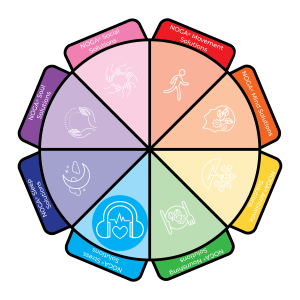The Importance Of Breathing In Through The Nose, And Then Out Through The Mouth

In the last installment, Resourcing For Safety And Stability 2, we shared two breathing resources that are helpful for people to calm down for sleep, as well as when one is in a situation that is challenging in the moment. (CLICK HERE to download) “BBB™” – Basic Breathing for Beginners™ and (CLICK HERE to download) Breathing Contest™, and
Here, I’d like to share one additional technique that again emphasizes the importance of breathing in through the nose, and then either out through the mouth or the nose but slowing down the exhale. This technique is called “The Physiological Sigh.” It has a very potent effect, giving quick and immediate results for relaxation. In the “Physiological Sigh,” one takes a long breath in through the nostrils, and then, even when you feel like you’re done inhaling, take a quick sniff, a puff of just a little bit more air, and then exhale it very slowly through a small, pursed mouth hole. Again, this follows the principle of inhaling through the nose and exhaling longer. You may be familiar with my caveat, based on neuroscience and polyvagal theory, “Relaxation is found in the exhale.” When we inhale, the heartbeat increases. When we exhale, our pulse goes down. The longer exhalation calms the body down.
A Fast-Track Stress Reduction Technique by Stanford Researcher Andrew Huberman

There’s also a wonderful little invention that was developed by the famous Breathing trainer, Anders Olssen. It’s called, “The Relaxator.” One wears it as if it were a pacifier around the neck. You place this little device in your mouth, inhale through the nose, and exhale through the mouth into “The Relaxator.” The device has levels of respiratory tension from one to five. If the setting is on “1,” the breath can go out very quickly and easily without tension. Whereas when dialed up to “5,” you can slow down and extend the exhale much longer. This fun tool can be used while doing quiet activities that do not require talking or eating. For instance, you can easily practice while reading, doing computer or household work, while driving, etc.
CLICK HERE to check it out!
Here’s mine 😊
We love hearing from you, please feel free to leave your comments below.
With Gratitude,
Rus Devorah



